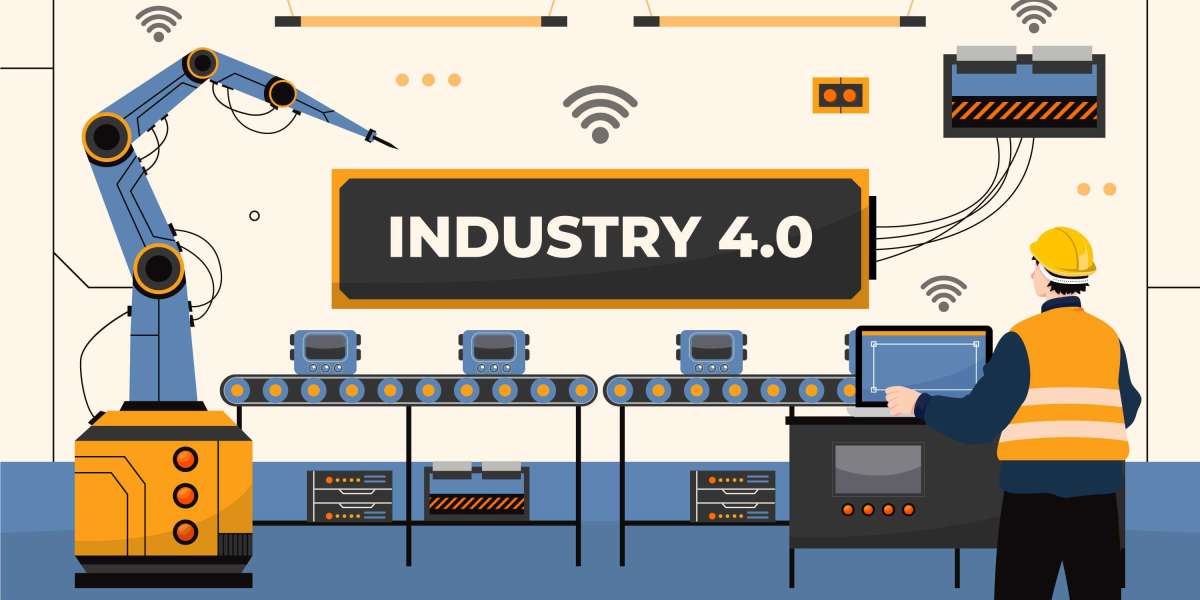The manufacturing industry is undergoing a profound transformation thanks to the integration of IT solutions. In the past, defect detection relied heavily on human oversight, which not only was time-consuming but also prone to errors. However, with the rapid advancements in technology, manufacturers in the USA and worldwide are increasingly adopting IT-driven solutions to optimize defect detection processes. These innovations are reshaping the industry, leading to higher efficiency, reduced costs, and enhanced product quality. In this blog, we’ll explore how IT solutions for manufacturing are revolutionizing defect detection and the benefits they bring.
The Challenge of Defect Detection in Traditional Manufacturing
Defect detection is a critical component of the manufacturing process. For decades, it was carried out manually or with rudimentary automated systems. Workers would visually inspect products, or machines would identify some defects based on predefined criteria. While this worked for a time, it came with limitations:
- Human error: Manual inspection is prone to mistakes due to fatigue or oversight. This leads to inconsistent detection rates, which can cause defective products to slip through the cracks.
- Slow processing: Human and semi-automated inspections are time-consuming, slowing down production lines and impacting output rates.
- Inability to detect complex defects: Traditional systems often miss defects that are subtle, such as micro-cracks or imperfections invisible to the naked eye, compromising product quality and safety.
- Increased costs: Poor defect detection in manufacturing leads to a higher rate of rework, returns, and warranty claims, all of which add significant costs to a business.
To stay competitive, manufacturers needed a more efficient, reliable, and scalable solution to ensure that products meet quality standards without sacrificing time or cost. This is where IT solutions come in.
IT Solutions and Their Impact on Defect Detection
Information technology (IT) solutions, including artificial intelligence (AI), machine learning (ML), and advanced data analytics, provide manufacturers with the tools to automate and enhance defect detection processes. These technologies offer several advantages over traditional methods:
- AI-Driven Visual Inspection
AI-powered visual inspection systems are one of the most significant innovations in defect detection in manufacturing. By utilizing machine vision and deep learning algorithms, these systems can analyze images of products with incredible accuracy. AI models are trained to recognize patterns and detect defects that would be nearly impossible for humans to see, such as tiny surface imperfections, irregular shapes, or color variations.
- Increased accuracy: AI visual inspection systems have the potential to detect defects with a higher level of precision, significantly reducing false negatives and positives.
- Real-time monitoring: These systems can operate 24/7, continuously inspecting products in real time without fatigue, allowing manufacturers to spot issues earlier in the production line and take corrective action immediately.
- Adaptability: AI-driven solutions can learn and improve over time, adjusting to new defect types as they arise, making them highly versatile in a dynamic production environment.
- Machine Learning and Predictive Maintenance
Machine learning (ML) models are not only revolutionizing defect detection in manufacturing but also helping manufacturers predict when equipment may fail. By analyzing large datasets from production lines, ML algorithms can identify patterns that suggest potential defects or mechanical issues before they occur.
- Preventive defect detection: ML algorithms can predict where defects are most likely to happen based on historical data, allowing manufacturers to proactively address issues.
- Improved maintenance: Predictive maintenance powered by ML reduces machine downtime by ensuring that maintenance is performed only when needed, rather than on a fixed schedule, thereby keeping machines running at optimal efficiency.
- Cost savings: By preventing defects and equipment failures, manufacturers can reduce waste, minimize costly repairs, and prevent lost production time, all of which contributes to significant cost savings.
- Big Data and Advanced Analytics
The integration of big data and advanced analytics into manufacturing processes is providing unprecedented insights into defect detection. With the ability to collect and analyze vast amounts of data from sensors, machines, and production systems, manufacturers can uncover hidden patterns that signal potential defects.
- Data-driven decisions: Advanced analytics tools help manufacturers make informed decisions by identifying trends and correlations between production variables and defect occurrences.
- Process optimization: By analyzing historical data, manufacturers can identify areas where defects are most likely to occur and optimize those parts of the process, reducing the chances of future defects.
- Root cause analysis: When defects are detected, big data analytics can help pinpoint the root cause, enabling manufacturers to implement long-term solutions rather than temporary fixes.
- IoT-Enabled Quality Control Systems
The Internet of Things (IoT) is playing an essential role in defect detection in manufacturing and quality control by connecting machines, sensors, and production systems into a single network. IoT-enabled systems can monitor product quality in real-time and trigger alerts or corrective actions when defects are detected.
- Real-time data collection: IoT devices continuously gather data from every stage of production, allowing for instant detection of anomalies or irregularities that could lead to defects.
- Remote monitoring: Manufacturers can monitor production lines remotely, ensuring that defect detection processes are consistently carried out, even in geographically dispersed locations.
- Automation and integration: IoT systems can seamlessly integrate with other IT solutions like AI and ML, enabling full automation of defect detection processes.
Benefits of IT-Driven Defect Detection
The implementation of IT solutions in defect detection offers a range of benefits that extend beyond simple quality control. These technologies are reshaping manufacturing by offering long-term advantages:
- Higher Product Quality
IT solutions for manufacturing allow for more accurate, real-time detection of defects, resulting in higher-quality products. This ensures that only products meeting the desired specifications are delivered to customers, leading to greater customer satisfaction and reduced returns.
- Increased Efficiency
Automation of defect detection reduces the reliance on manual inspections, speeding up production processes. This not only increases throughput but also minimizes downtime by addressing issues before they escalate.
- Cost Reduction
By detecting defects earlier and more accurately, manufacturers can minimize waste, reduce rework, and lower warranty claims. The adoption of predictive maintenance further decreases costs by reducing machine failures and downtime.
- Competitive Advantage
Companies that integrate IT solutions for manufacturing into their defect detection processes can gain a competitive edge by delivering higher-quality products at a lower cost. This positions them to better compete in the global market and meet the growing demands of consumers.
Challenges in Implementing IT Solutions
While IT solutions offer numerous benefits, their implementation is not without challenges:
- Initial investment: The upfront costs of acquiring and integrating advanced IT solutions can be significant, especially for smaller manufacturers.
- Skilled workforce: The adoption of these technologies requires a skilled workforce capable of managing and maintaining IT systems.
- Data management: With the increase in data generated by IoT devices and AI systems, manufacturers need to invest in robust data management and storage systems.
However, the long-term benefits of IT-driven defect detection far outweigh these initial challenges. As technology continues to evolve, we can expect even more innovations in defect detection, further optimizing the manufacturing process.
Conclusion
IT solutions are transforming defect detection in manufacturing by making the process faster, more accurate, and cost-effective. Through AI-driven visual inspection, machine learning, big data analytics, and IoT-enabled systems, manufacturers can ensure higher-quality products, reduce costs, and stay competitive in an ever-evolving industry. As these technologies become more accessible, manufacturers of all sizes can reap the rewards of IT-driven defect detection, positioning themselves for future growth and success.
With IT solutions at the forefront of innovation, the future of defect detection in manufacturing is undoubtedly bright.













